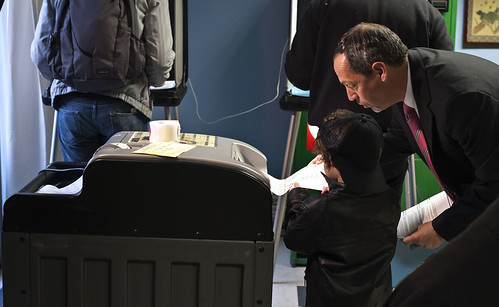
It seems that top three lists are successful in ranking movies and tourist destinations, but not so much in elections.
A measure to eliminate ranked-choice voting will be given to constituents on the upcoming November ballot as an attempt to avoid voter confusion and streamline the voting process.
Instead of the current system, which allows voters to choose their top three candidates, this measure would reinstate a run-off election in which the voter picks only one candidate.
Supporters of the measure say ranked-choice voting is confusing, tosses out votes and gets candidates in office with less than 50 percent of the majority vote.
“We should be focusing on who to vote for (and) what to vote for, not how to vote,” said Supervisor Mark Farrell, who proposed the measure to eliminate ranked-choice voting.
Ranked-choice voting allows voters to rank their top three candidates in order of preference. If a candidate does not receive more than half of the votes, the candidates with the lowest votes are eliminated; ballots are then re-tallied and the second rank choice vote is redistributed. This continues until a candidate receives more than 50 percent of the votes.
The charter amendment would eliminate ranked-choice voting for mayoral and city official elections and would reintroduce a reformed run-off system. The new voting system would have a primary election in September. If a candidate does not receive 65 percent of the votes in the primary election, a run-off election would take place in November with the top two candidates.
Farrell failed to get the measure on the June ballot back in February. He now has enough support from his colleagues on the Board of Supervisors to place the reformed run-off voting system on the November ballot.
Farrell said ranked-choice voting confuses voters, especially when English is their second language.
According to exit polls conducted by SF State political science professor Francis Neely in 2004 and 2005, 85 percent of voters knew what ranked-choice voting was, but had a hard time understanding how votes were tallied. He said minority voters had more trouble understanding the system but generally understood the process.
Supporters of ranked-choice voting, on the other hand, say run-off elections are costly, increase negative campaigning and have a lower voter turnout.
Kristina Lee, president of the Political Science Student Association, said it is better to keep ranked-choice voting because replacing the current system would confuse voters and reduce voting participation.
“It is more difficult to get young voters in the first place,” Lee said. “If we have fewer (young) people voting, there is less influence,” Lee said.
Lee said the young voters she spoke with had a hard time understanding ranked-choice voting but more voter education would be a better option than replacing it.
According to Supervisor David Campos, too many elections would fatigue voters, which would cause low voter turnout.
He suggested the current system be reformed rather than eliminated because ranked-choice voting has worked the way it was intended.
“As a result of ranked-choice voting, we have more involvement by the electorate (voters), which is ultimately the objective of any kind of voting system,” Campos said.
Opponents of ranked-choice voting are also concerned with the number of votes that get tossed out in elections.
“You’ve got somebody who has made the effort (to vote), but the system as it is disenfranchises them,” said Supervisor Sean Elsbernd who is in favor of replacing ranked-choice voting. “That doesn’t make a lot of sense to me.”
Neely described tossed votes as exhausted votes. He said that this happens when a ballot is no longer counted in the election because the three candidates on that ballot are eliminated.
“Allowing people to rank as many candidates as are running would be an undeniable improvement to the system we have now,” Neely said.
Neely said reforming ranked-choice voting is a better option than replacing it because exhausted votes are the biggest flaw and the biggest concern in the current system.
Supervisor John Avalos, who ran for mayor last year, said he had a hard time getting funds for his campaign in the first place. Raising more money for a run-off election would have been harder.
“To be challenging them about giving more would be something that, for candidates like myself who are pretty grassroots, would be very difficult to be able to accomplish in a run-off,” Avalos said.
Avalos and other advocates for ranked-choice voting say it provides a better arena for political discourse, diminishes negative campaigning and promotes diversity in city officials.
While those opposed to the current voting system say it is flawed, Elsbernd said the majority vote no longer exists because officials are put in office without it.
Neely said every voting system is imperfect and has faults.
“Every election system is flawed,” Neely said. “It’s just what flavor of flawed system you prefer.”





Terry • Mar 29, 2012 at 10:15 am
Your article contains a mistake. It reads, “A measure to eliminate ranked-choice voting will be given to constituents on the upcoming November ballot.” That is not correct, Supervisor Mark Farrell has made a PROPOSAL to the board of supervisors to put something on the November ballot. But he needs six votes of his supervisorial colleagues in order to get that on the ballot. His previous proposal failed to win six votes, and it remains to be seen whether his latest proposal to go to September elections instead of RCV elections in November will win six votes at the Board of Supervisors. This proposal, just like his last one, has received a lot of criticism, including by the San Francisco Examiner editorial board.